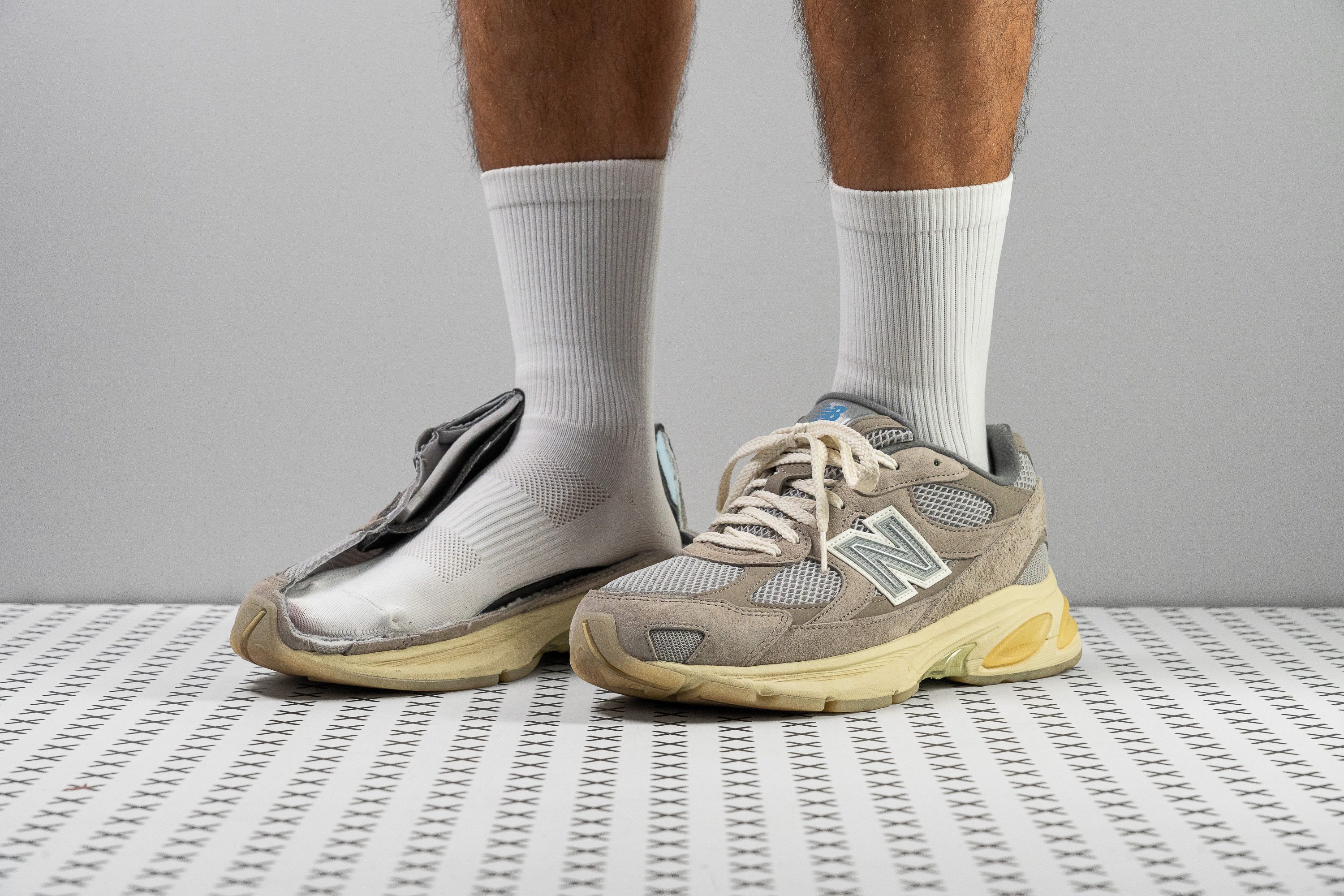Our verdict
- Top pick in best sneakers for shin splints
Pros
- Very comfortable
- High-quality materials
- Super durable outsole
- Best impact protection for your feet
- Incredibly high energy return for sneakers
- Fairly stable
- Authentic leather and suede
- Cool retro style
- Lots of reflective elements
Cons
- Not breathable
- Might be too narrow for some
Audience verdict
Comparison
The most similar sneakers compared
+ + Add a shoe | |||||
|---|---|---|---|---|---|
| Audience score | 90 Good! | 87 Good! | 95 Superb! | 88 Good! | |
| Price | $160 | $150 | $100 | $160 | |
| Style | DadRetro | ClassicRetroSportyChunky | DadRetroSporty | SportyWedgeChunky | |
| Shock absorption | High | - | High | - | |
| Energy return | High | - | Moderate | - | |
| Traction | High | - | High | - | |
| Breathability | Warm | Breathable | Warm | Warm | |
| Weight lab | 13.4 oz / 381g | 14 oz / 397g | 12.9 oz / 366g | 13.4 oz / 381g | |
| Size | - | True to size | True to size | True to size | |
| Midsole softness | Soft | Balanced | Soft | Balanced | |
| Material | LeatherMesh | LeatherMeshSuede | LeatherMesh | SuedeTextile | |
| Season | Winter | Summer | SpringFall | Winter | |
| Inspired from | Running | Running | Running | Running | |
| Width / fit | Medium | Medium | Medium | Wide | |
| Toebox width | Narrow | Medium | Medium | Medium | |
| Leather/suede quality | Real suede | Real leather | Real leather | Real suede | |
| Toebox durability | Decent | Decent | Decent | Good | |
| Heel padding durability | Decent | Decent | Decent | Bad | |
| Outsole durability | Good | Good | Good | Bad | |
| Heel stack lab | 35.7 mm | 34.8 mm | 32.3 mm | 35.8 mm | |
| Stiffness | Moderate | Stiff | Moderate | Stiff | |
| Tongue padding | Average | Average | Average | Thin | |
| Drop lab | 11.0 mm | 10.3 mm | 10.0 mm | 11.1 mm | |
| Forefoot | 24.7 mm | 24.5 mm | 22.3 mm | 24.7 mm | |
| Removable insole | ✓ | ✓ | ✓ | ✓ | |
| Heel tab | None | None | None | Finger loop | |
| Torsional rigidity | Moderate | Stiff | Moderate | Stiff | |
| Heel counter stiffness | Moderate | Moderate | Moderate | Moderate | |
| Reflective elements | ✓ | ✓ | ✗ | ✗ | |
| Closure | Laces | Laces | Laces | Laces | |
| Top | Low top | Low top | Low top | Low top | |
| Ranking | #71 Bottom 41% | #105 Bottom 13% | #5 Top 5% | #103 Bottom 14% | |
| Popularity | #70 Bottom 42% | #82 Bottom 32% | #4 Top 4% | #98 Bottom 19% |
Who should buy
Let the 2010 get a spot in both your heart and your wardrobe if:
- You want a super comfortable shoe full of high-quality materials and reflective details to keep you safe at night.
- You're looking for a pair of sneakers with a shock absorption and energy return proper from running shoes.
- You'd love to show off your retro shoes all day long, so you need a very durable outsole.
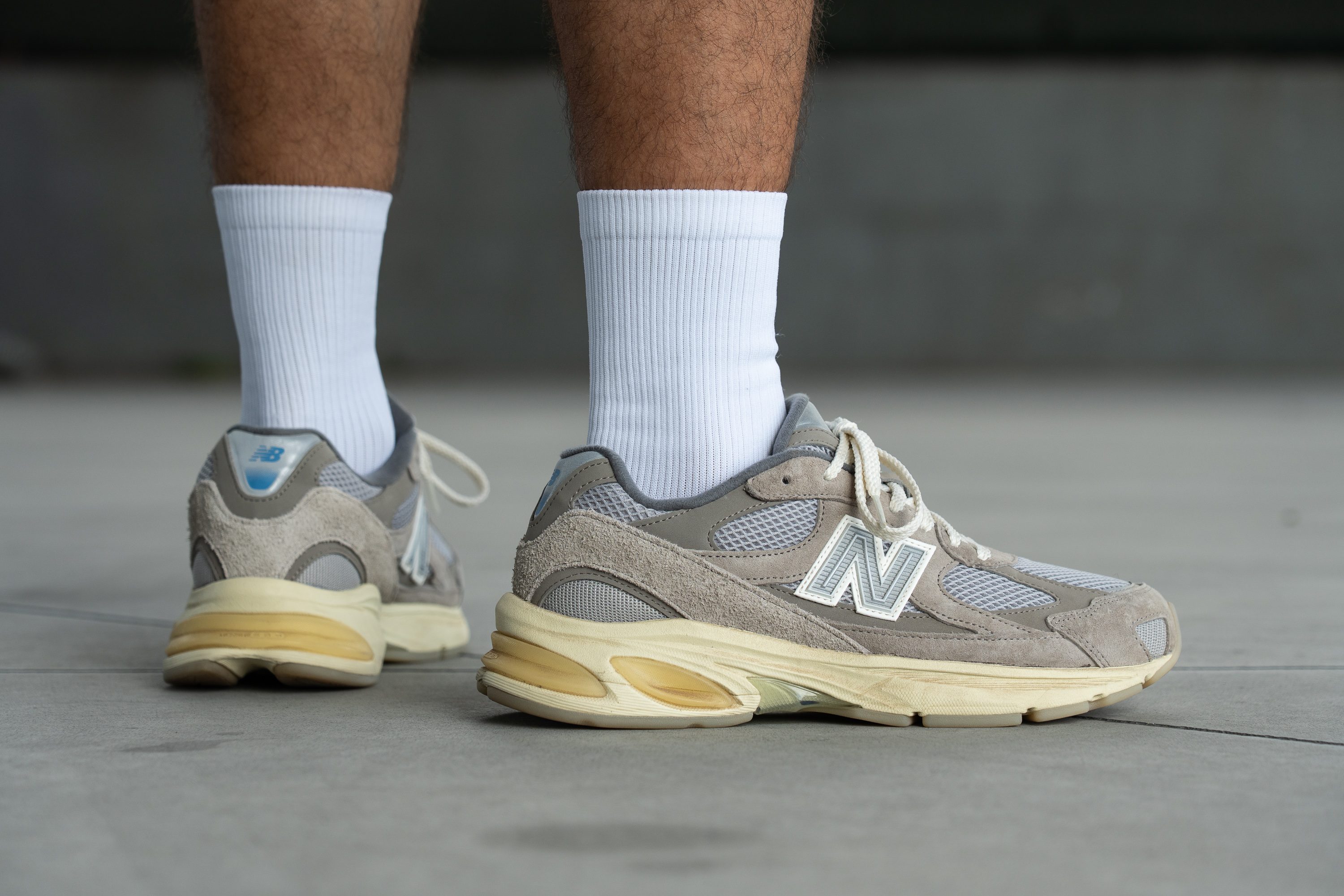
Who should NOT buy
You should totally forget about the NB 2010 during the summer. This shoe is not breathable at all! If you want to rock your sneakers when temperatures go up, we've got you covered: these are our casual shoes with the best airflow!
If you have wide feet, you should also skip this pair. Its structure might be a little bit too narrow for some sneakerheads, and that'd be a shame, as this New Balance's goal is to be comfortable. These are the wide sneakers that have been tested in our lab. And don't worry, many of them also have everyone's beloved retro aesthetics!
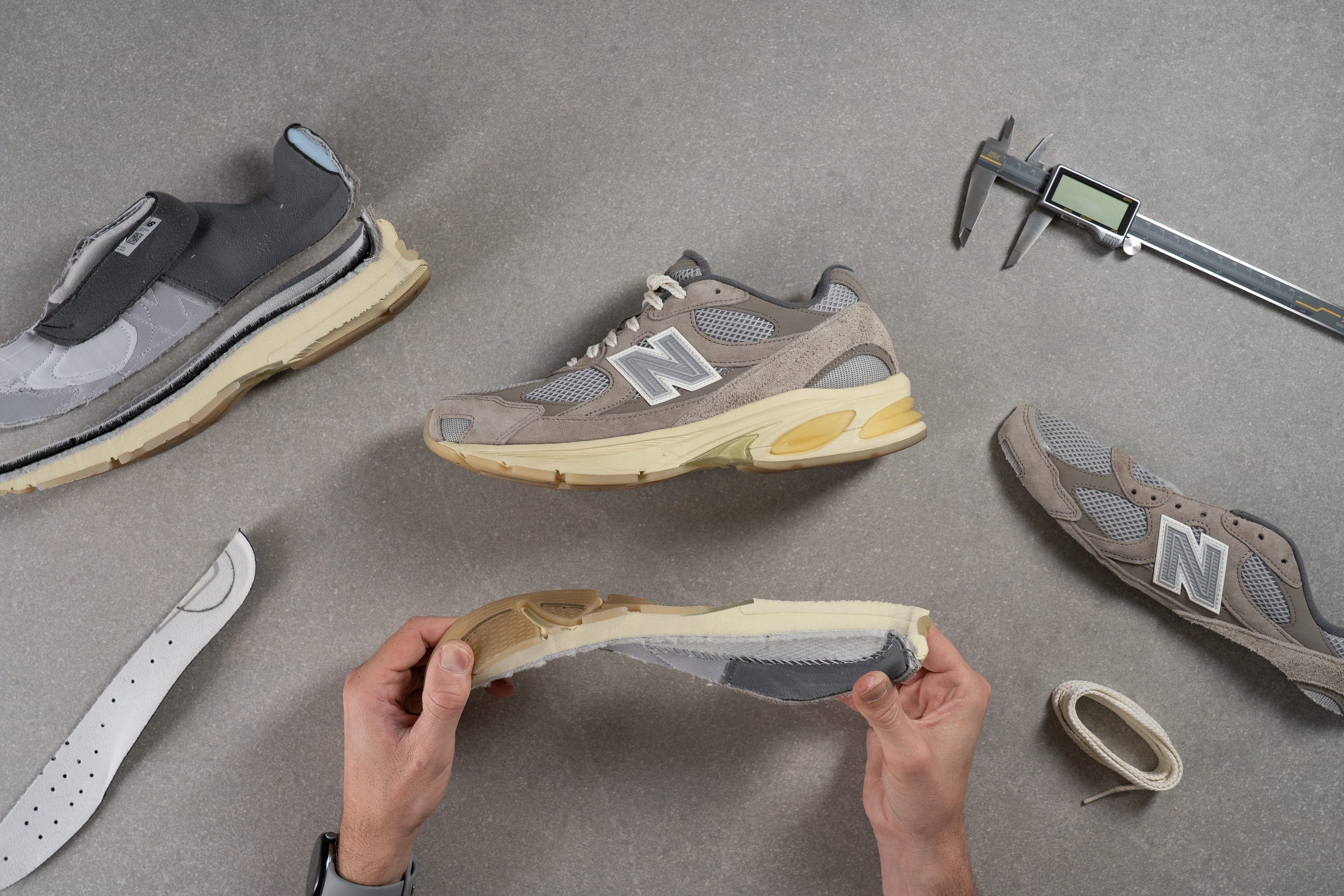
Cushioning
Shock absorption
Our lab tests started strong, as we'd have never expected such a high score in our shock absorption test. With an incredibly high 121 SA, the New Balance 2010 made sure our feet were completely protected from any impact. This worked wonders, as apart from improving the overall comfort levels of the shoe, it also made us want to keep walking all day long. The ABZORB SBS is pure magic!
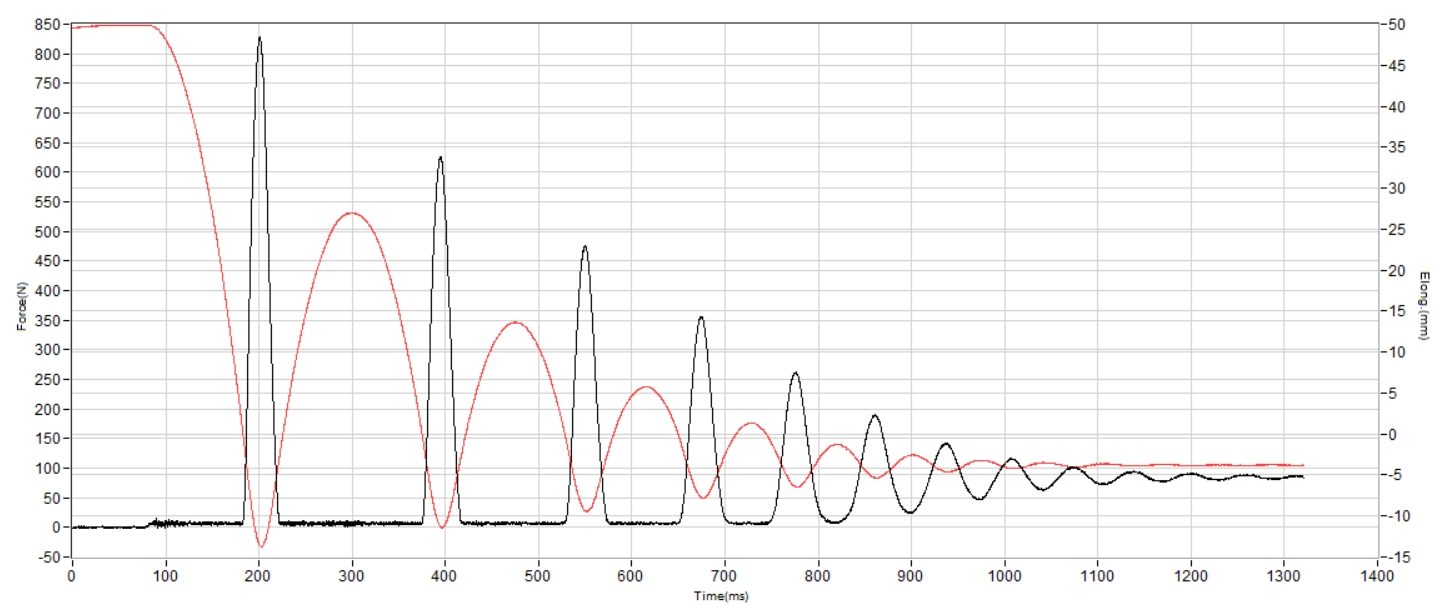
| 2010 | 121 SA |
| Average | 89 SA |
Energy return
Catching us by surprise once again, during our wear tests we felt this New Balance propelling us back up after every step. At the beginning, it even felt like a running shoe that energized our strides! With a crazy 60.4%, the 2010 made running errands incredibly fun.
| 2010 | 60.4% |
| Average | 50.2% |
Heel stack
These wonderful cushioning technologies come in a tall package that reaches 35.7 mm at the heel. So not only did our feet feel incredibly comfortable, they also felt protected and shielded from any obstacles or the harsher urban surfaces.
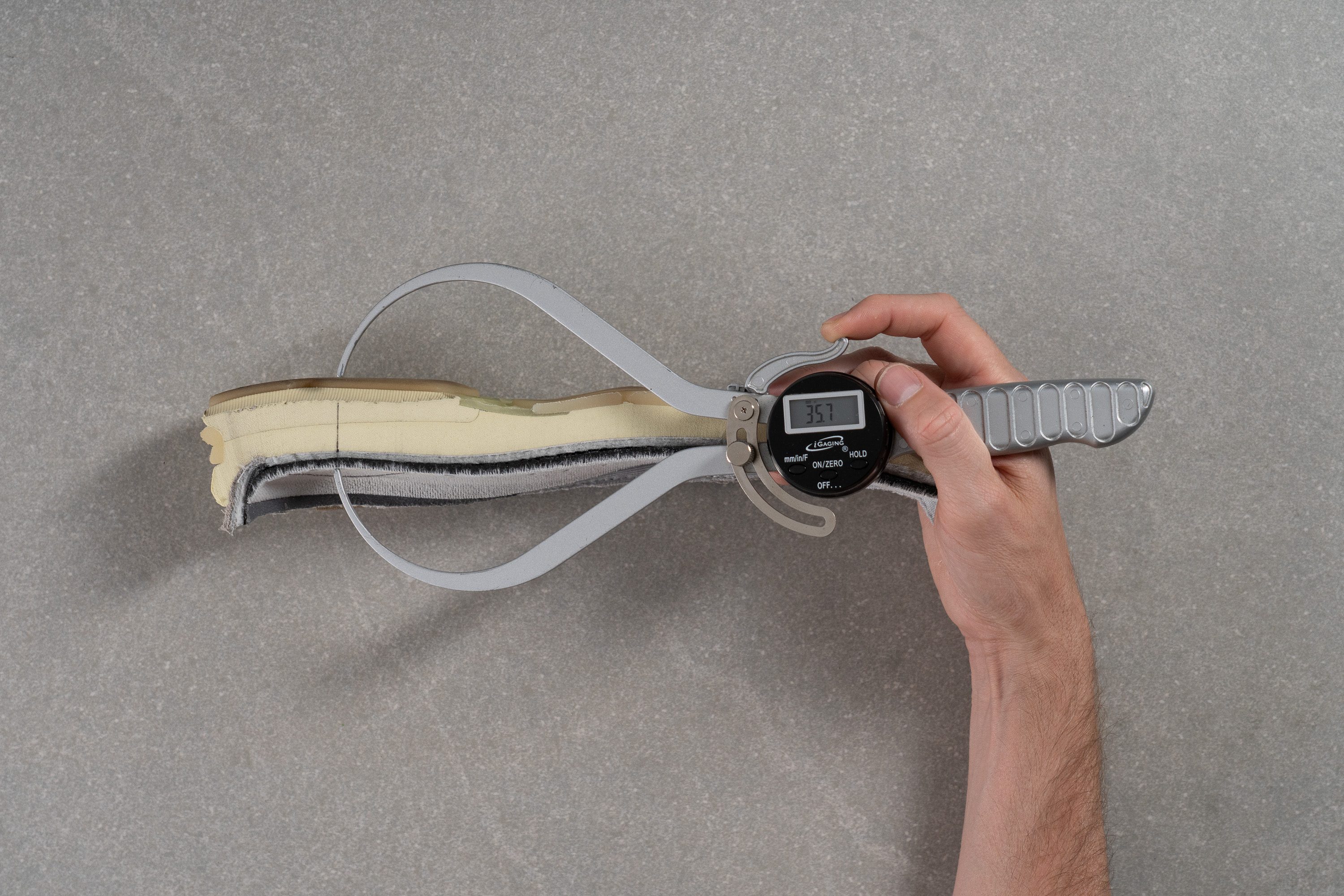
| 2010 | 35.7 mm |
| Average | 30.7 mm |
Forefoot stack
And we can say the same about the forefoot stack. With a higher-than-average score of 24.7 mm, our caliper reminded us that there's also plenty of material separating the ball of our feet from the floor.
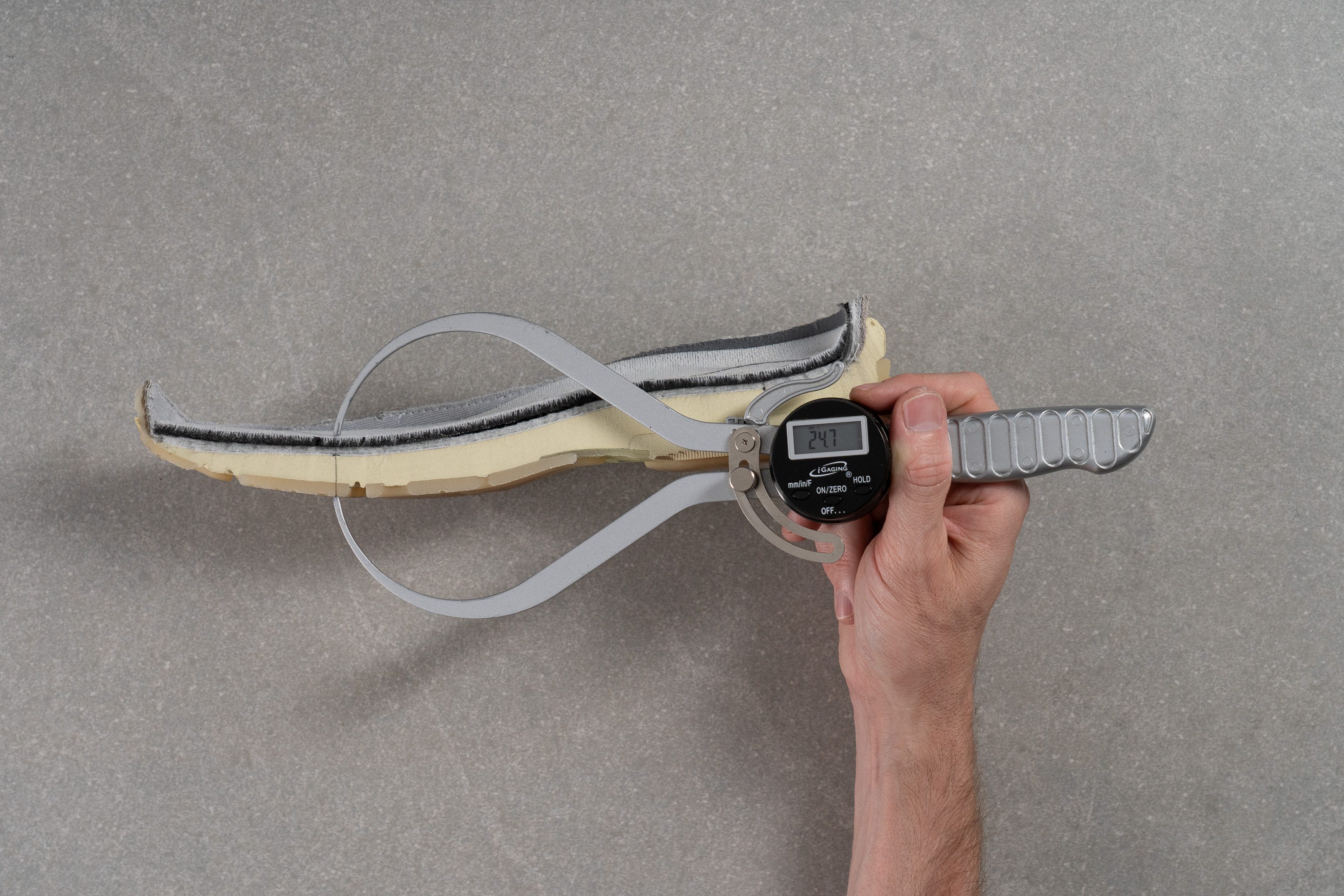
| 2010 | 24.7 mm |
| Average | 19.5 mm |
Drop
This taller midsole left us with an average drop of 11.0 mm. This means that the heel is slightly higher than the forefoot in terms of foot position, which translates into some extra comfort for the rearfoot.
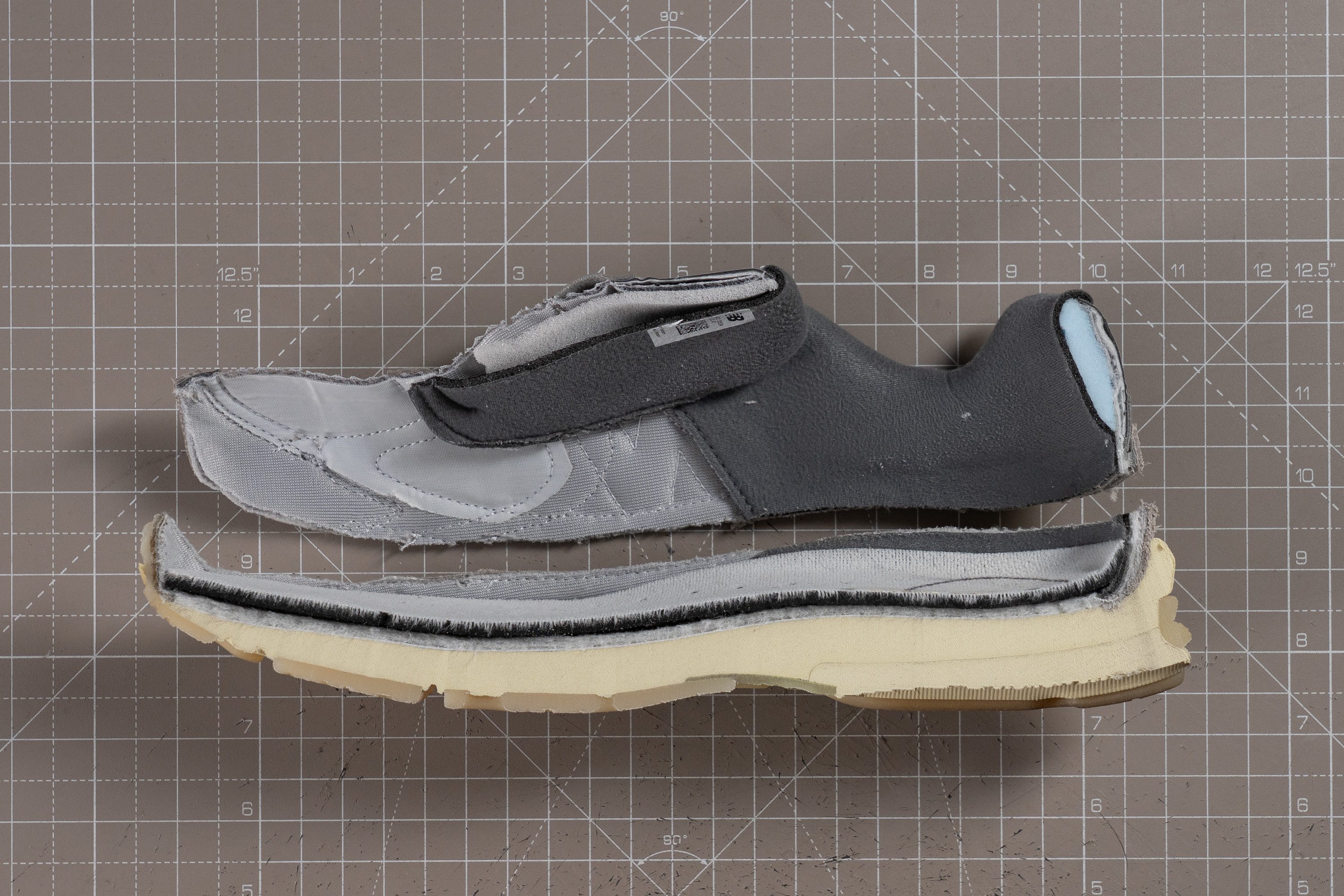
| 2010 | 11.0 mm |
| Average | 11.2 mm |
Midsole softness
After cutting it in half, we saw the 2010 features a dual-density midsole. The foam that's closer to the foot got a 19.5 HA score when we pressed our durometer against it. This means that it's softer than average, which offers some extra plushness underfoot.
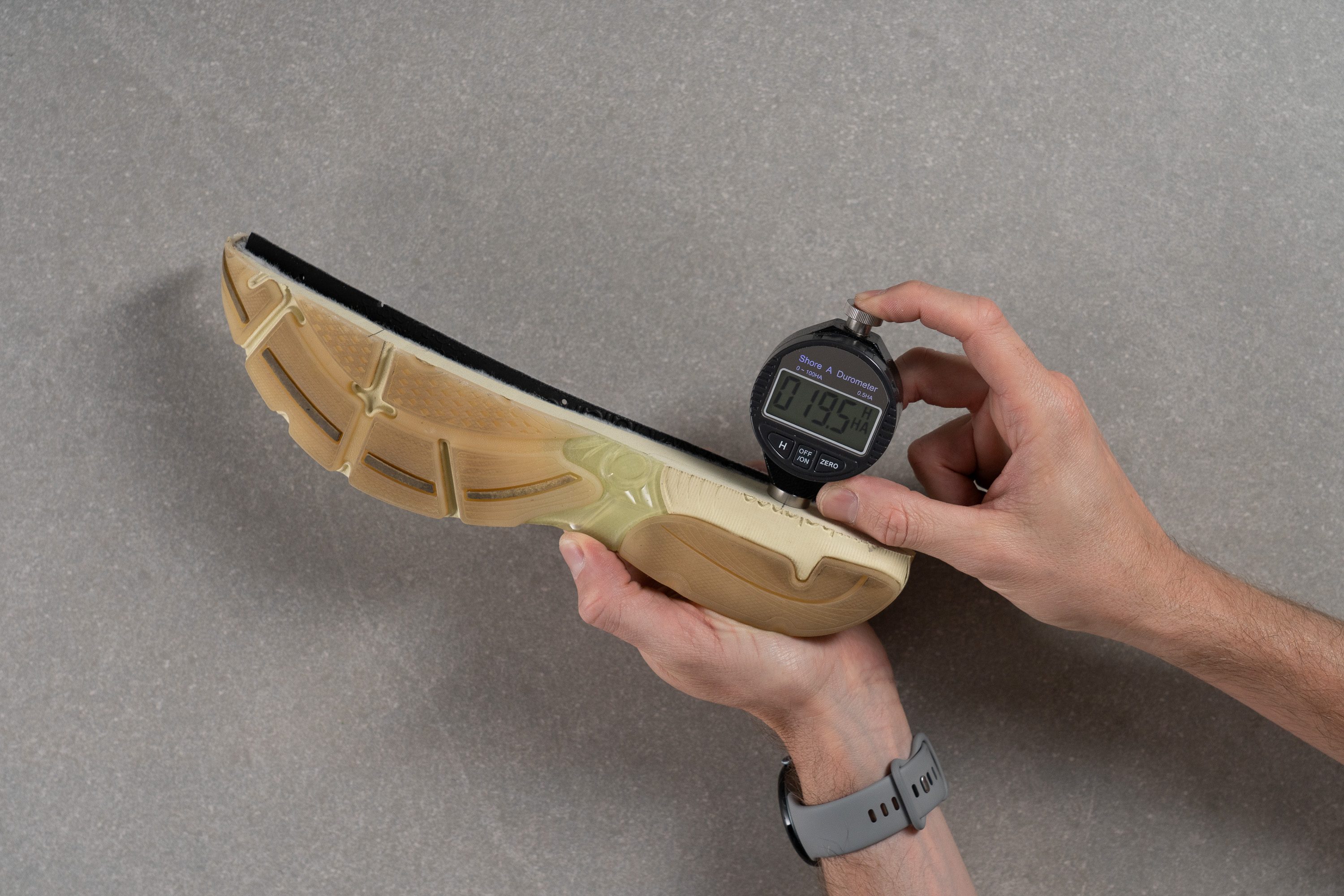
| 2010 | 19.5 HA |
| Average | 28.6 HA |
Secondary foam softness
In order to keep things balanced, NB decided to add a secondary foam. This compound is fairly firmer than the previous one, as our caliper returned 27.0 HA when we measured it. As it's closer to the ground, it improves the overall stability of the shoe without feeling excessively rigid. Way to go, New Balance!
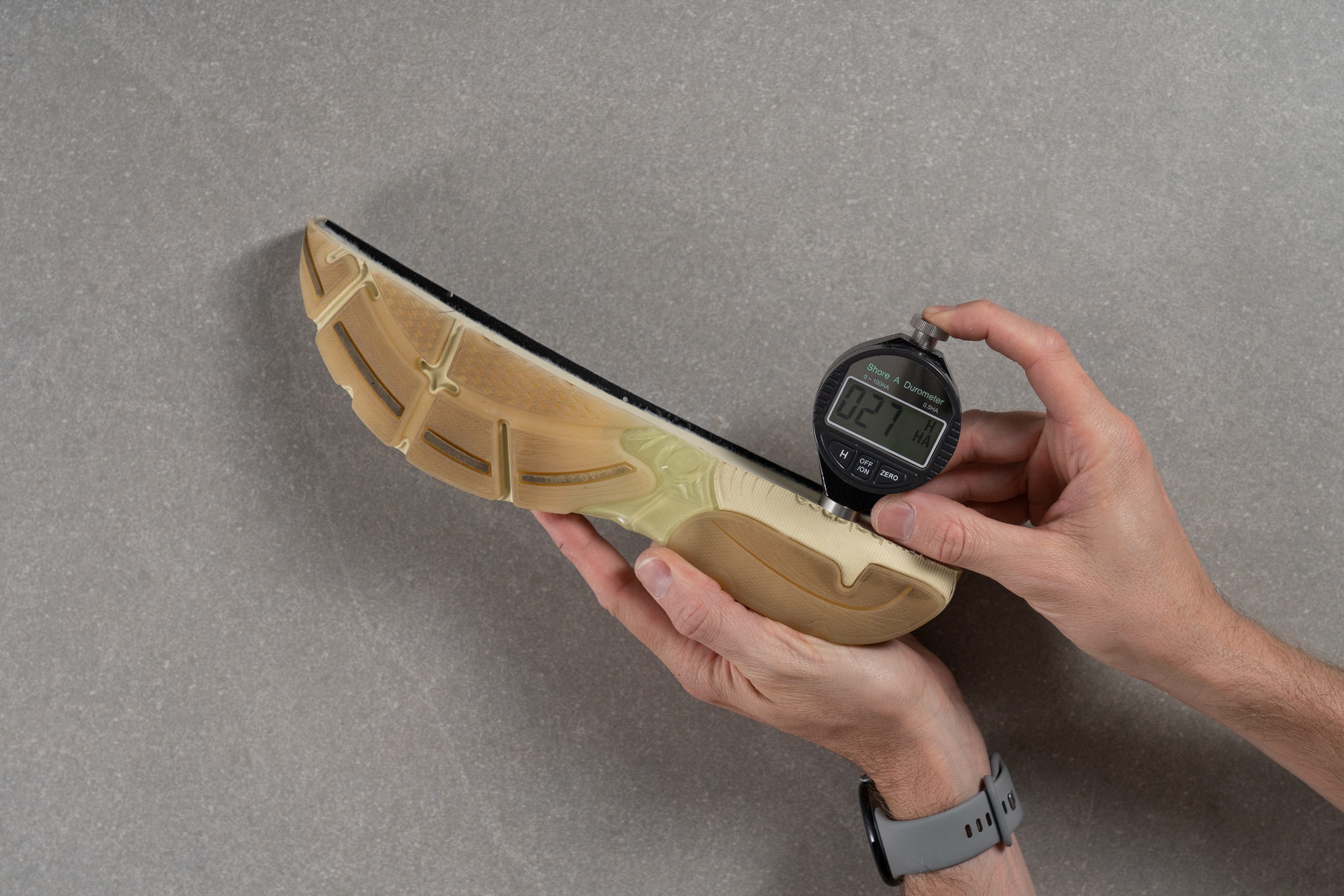
| 2010 | 27.0 HA |
| Average | 31.5 HA |
Size and fit
Size
Width / Fit
Despite its dad aesthetics, the 2010 didn't really feel like a very wide and chunky shoe during our wear tests. Our standard-width feet were okay with this, but as we wanted to know more, we started our gel test.
Once the mold of the interiors of the 2010 was ready, we grabbed our caliper and measured this shoe's width at its widest part. At 93.4 mm, it's slightly wider than average!
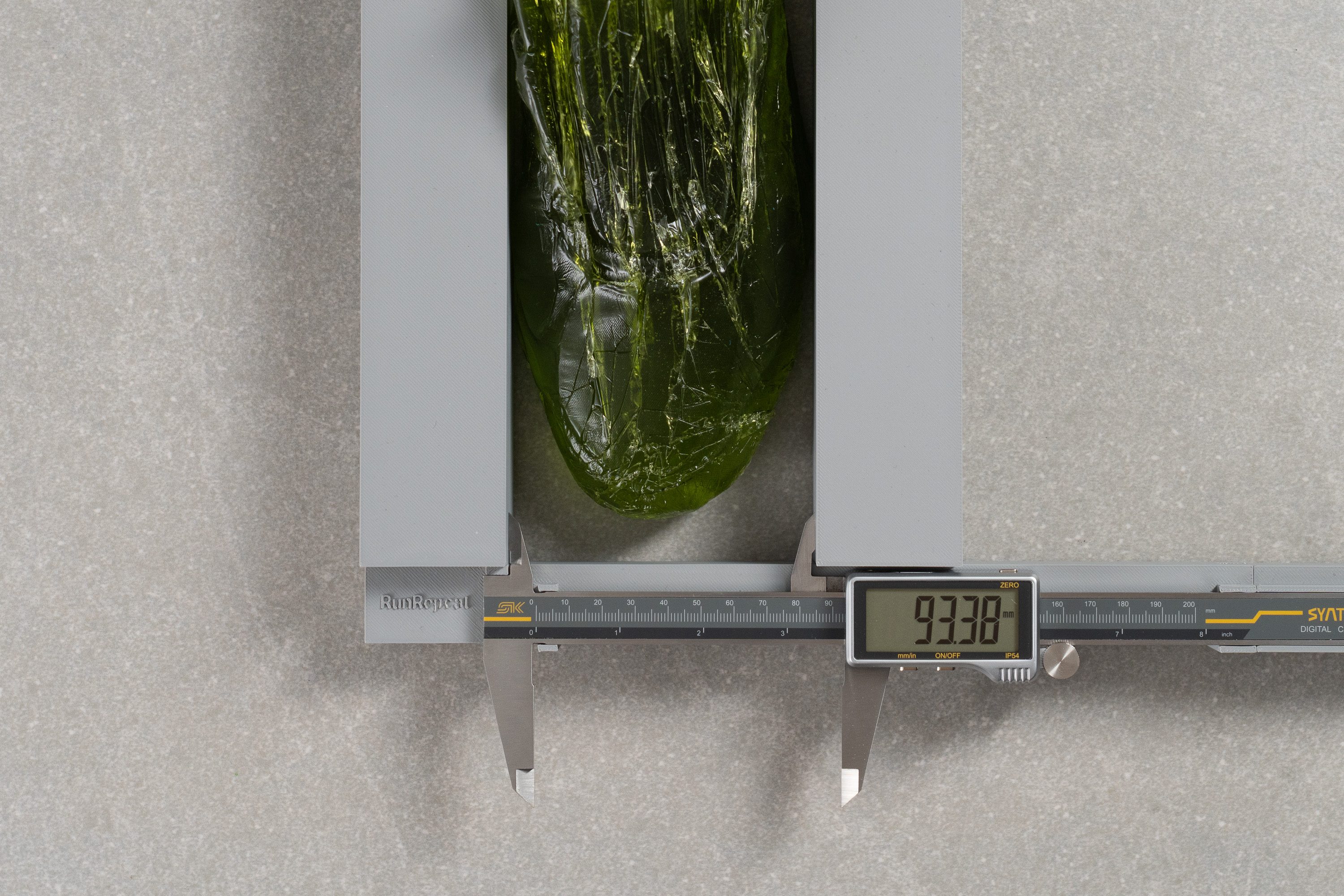
| 2010 | 93.4 mm |
| Average | 92.5 mm |
Toebox width
When we first looked at this shoe's gel mold, we noticed it was quite pointy. We moved the caliper all the way up to the toebox, and it marked 66.8 mm, which is a bit lower than average. Now that we have these two readings, we can confidently say these are not the best sneakers for people with wide feet.
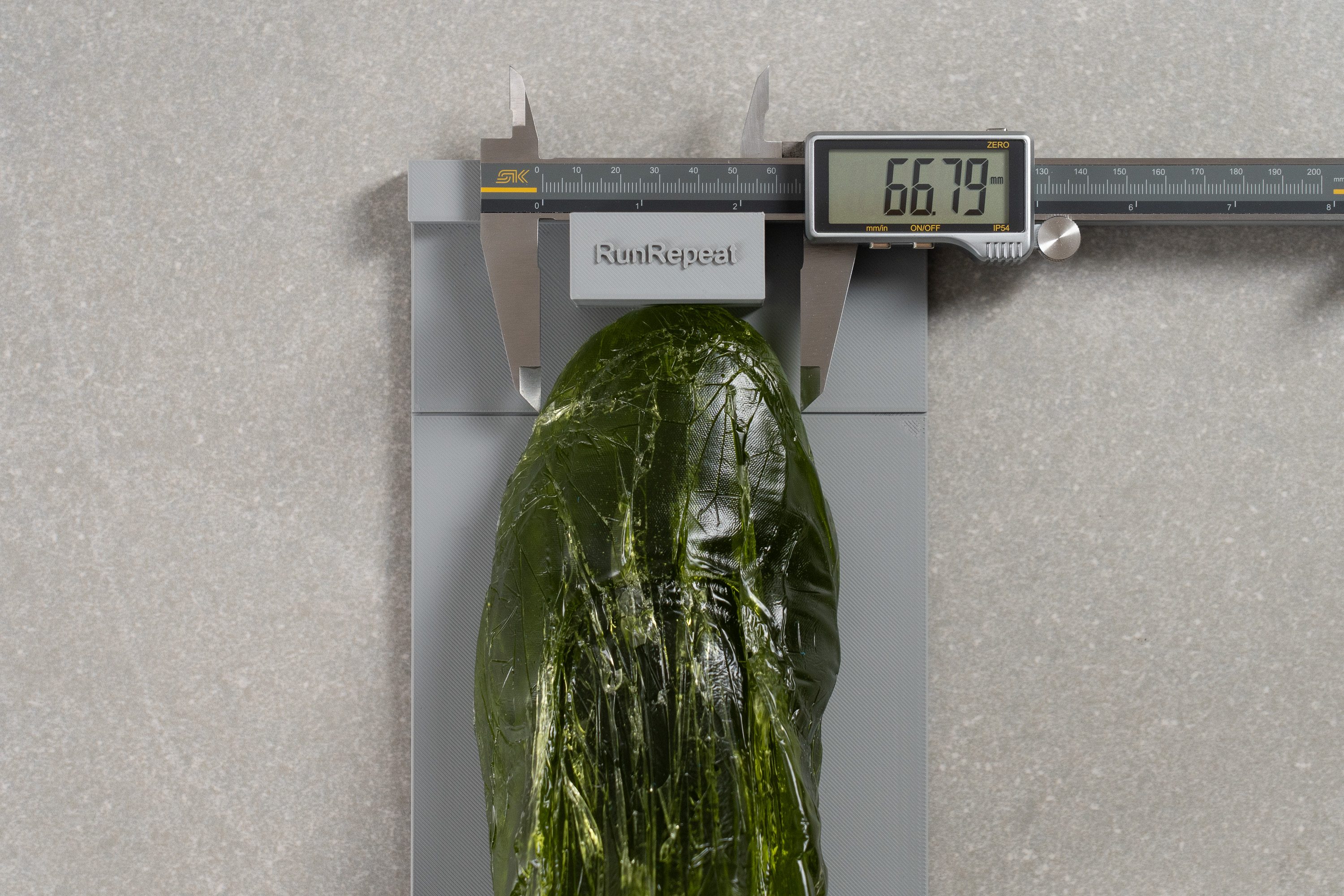
| 2010 | 66.8 mm |
| Average | 68.9 mm |
Toebox height
Even though the 2010 is not the widest pair of sneakers out there, it offers plenty of vertical space. Even if your toes are pointing up, we believe you should be fine with this NB, as its toebox height reaches 31.6 mm, making it way taller than this category's average.
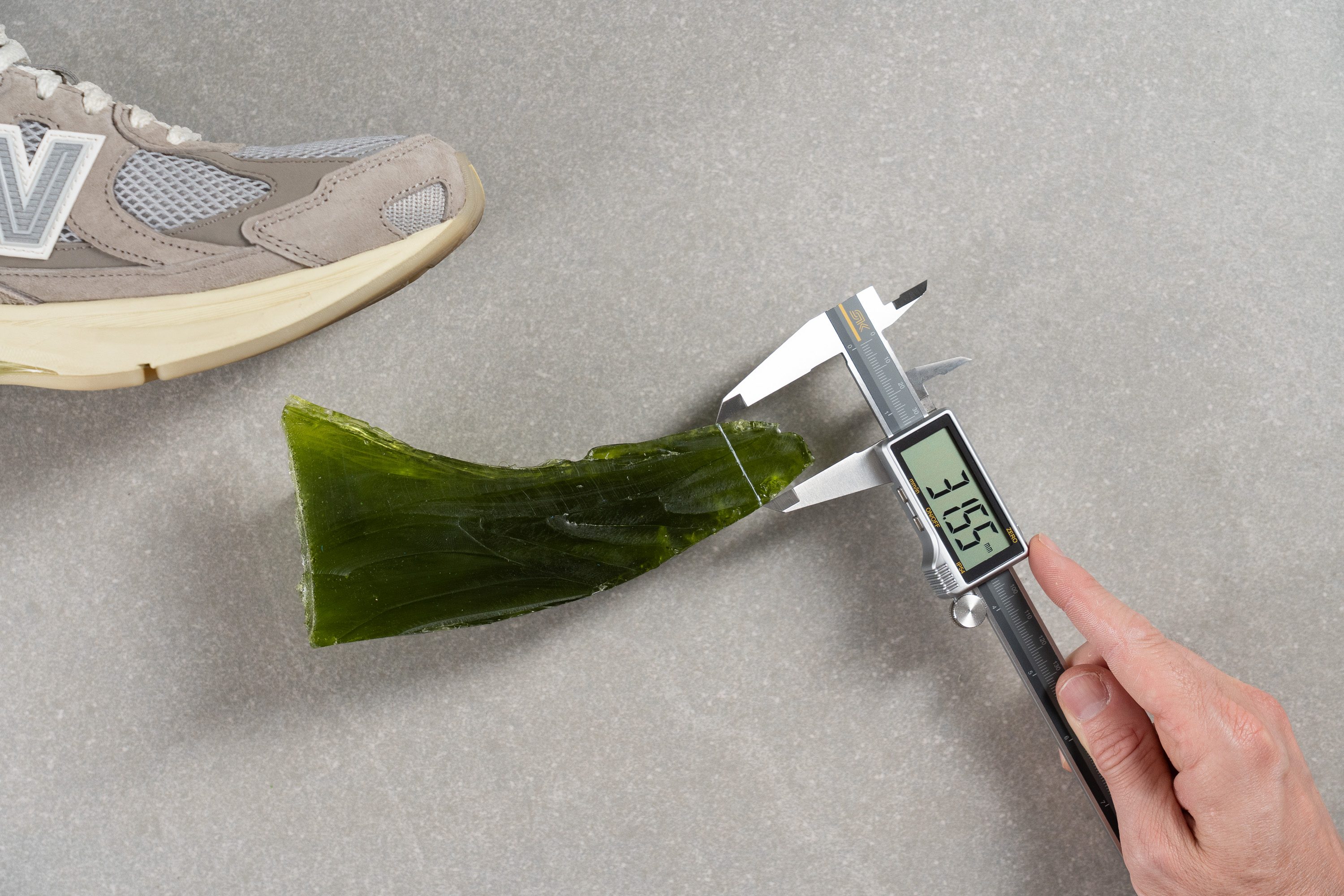
| 2010 | 31.6 mm |
| Average | 27.8 mm |
Traction / Grip
Traction test
During our wear tests, we enjoyed the 2010's solid grip. It was constant on most urban surfaces, and we never felt like we were going to slip on dry floors. We saw this crystal clear in our lab traction test, as this NB scored 0.45!
| 2010 | 0.45 |
| Average | 0.43 |
Outsole design
With a running-inspired outsole, the 2010 has enough rubber coverage to protect the hard-wear areas. There are many cutouts and gaps with exposed foam, which makes the shoe more flexible and lightweight.
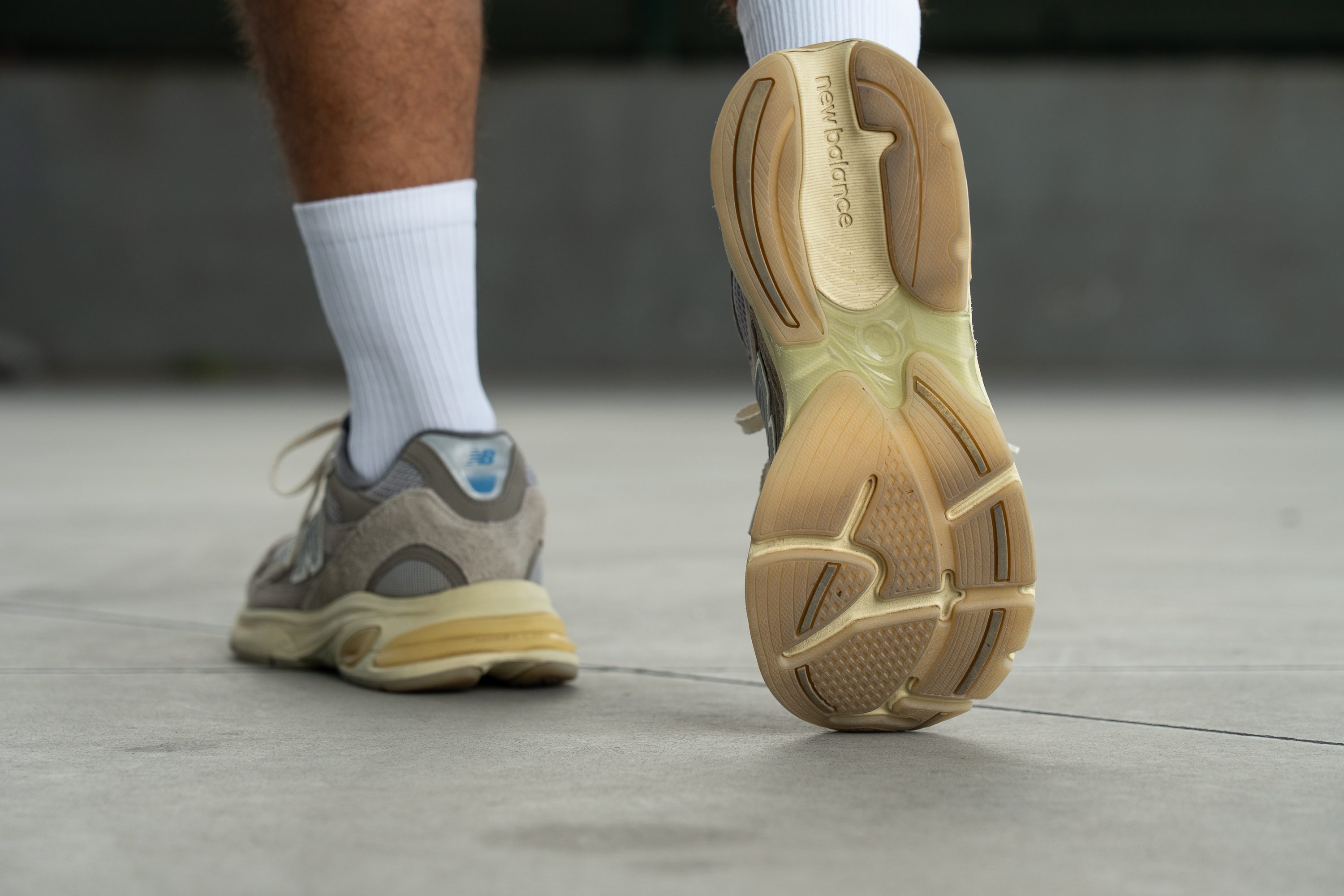
Flexibility / Stiffness
This NB scored a solid 15.2N on our flex test, which means it needed some more force than average to go all the way up to 30 degrees. Nevertheless, it didn't feel too stiff on foot or anything, as we still enjoyed a comfortable ride.
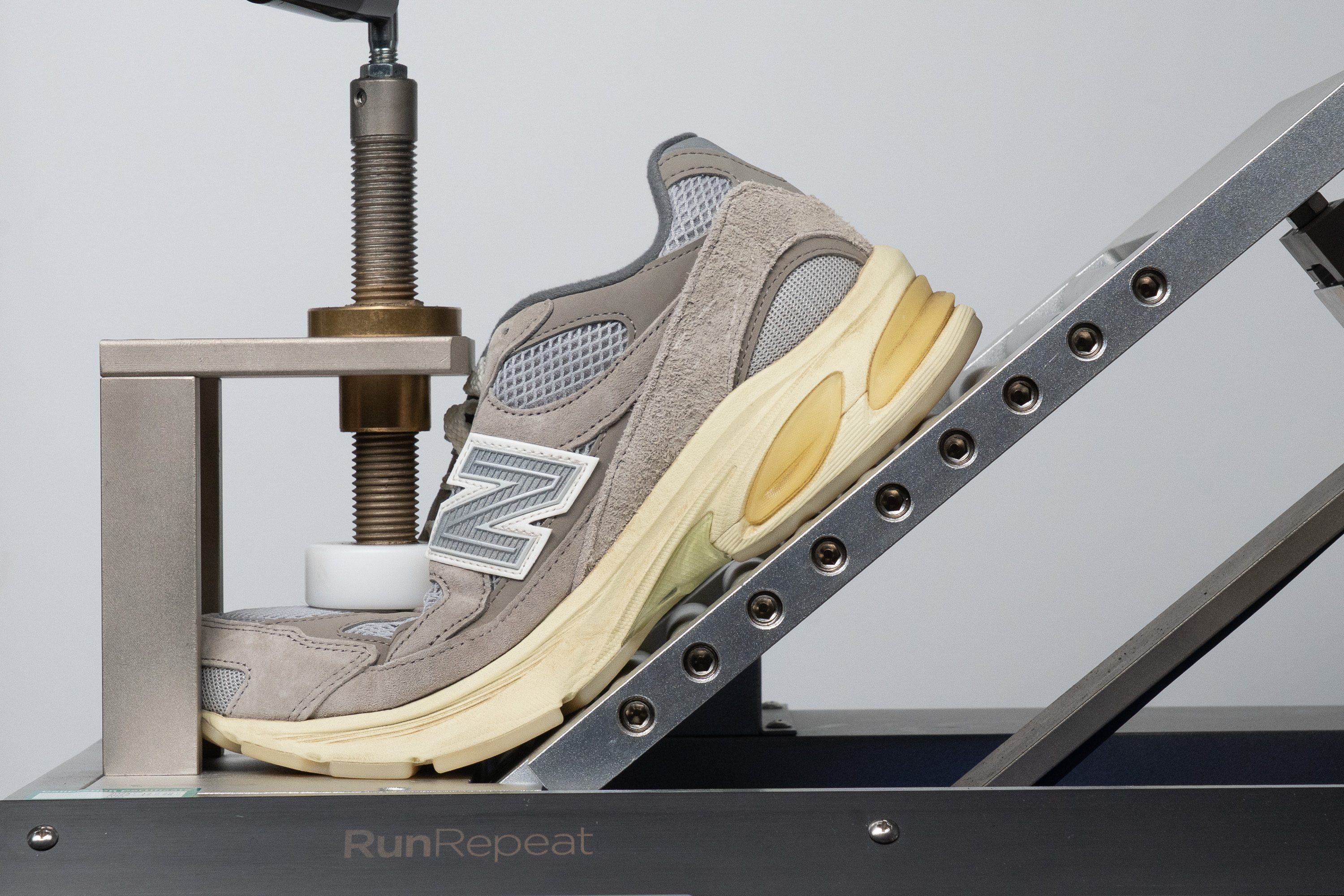
| 2010 | 15.2N |
| Average | 13.3N |
Weight
Luckily, the chunky vibe of the 2010 was literally just that... a vibe. Its lightweight structure didn't make our feet feel exhausted after our wear tests. Not even if we were walking all day long! Our scale confirmed it, as it returned 13.4 oz/381g, which is lower than average.
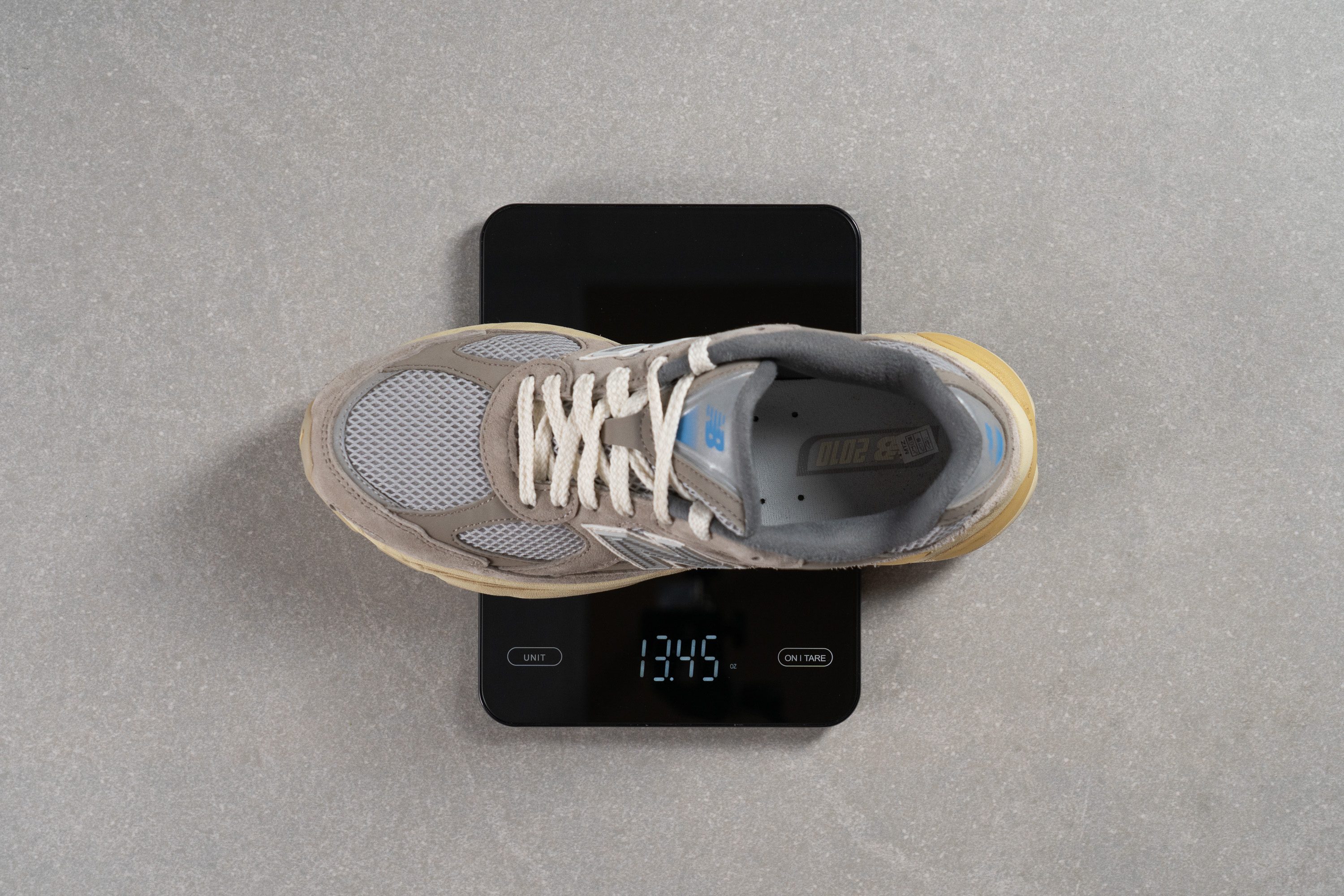
| 2010 | 13.4 oz (381g) |
| Average | 13.8 oz (390g) |
Breathability
During our wear tests, the 2010 felt like... a couple of comfy mini-ovens. If it was too hot, our feet just wanted to run away from it! When we took it to our lab, we understood why.
Things didn't look so bad at the beginning when we performed our light test. As you might notice in the video above, we could see our fingers' shape through the toebox's mesh easily, which might be an indicator of good airflow.
But... it turns out we were totally wrong on our first hypothesis. In our wear test, the 2010 absolutely paled in comparison to the Nike Air Max 270, which didn't have any problems letting the air in and out. On the other hand, our New Balance pair... literally choked. That's why we couldn't give it any other score than the lowest: 1/5.
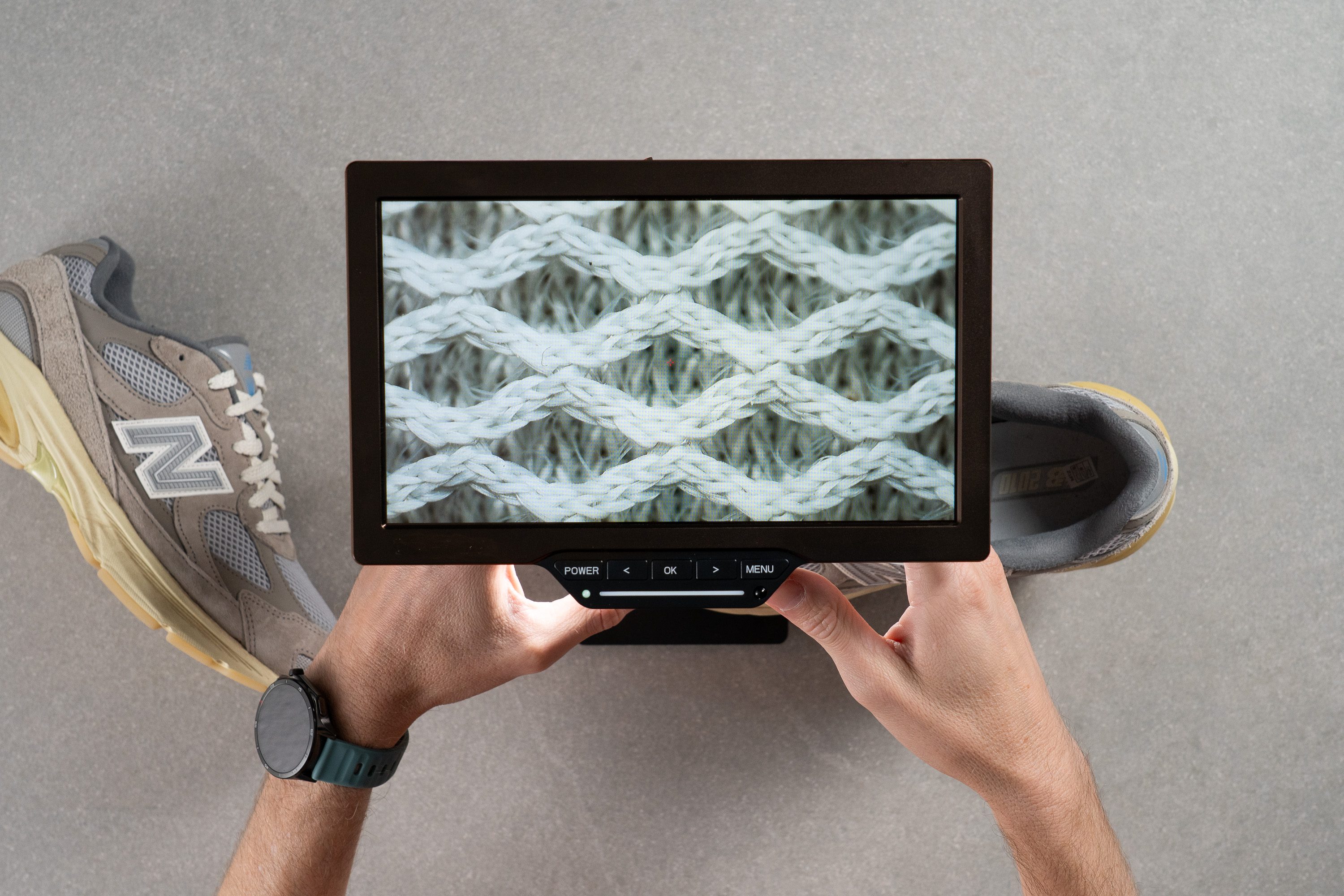
Thanks to our microscope, we could see this shoe's tricky design. It features a double-layered upper: there's an external overlay with big gaps, and then an internal one with a more tightly woven pattern. This might fool the eye, but there's no way it can trick our smoke machine! Our pro tip? Forget about the 2010 in the summer!
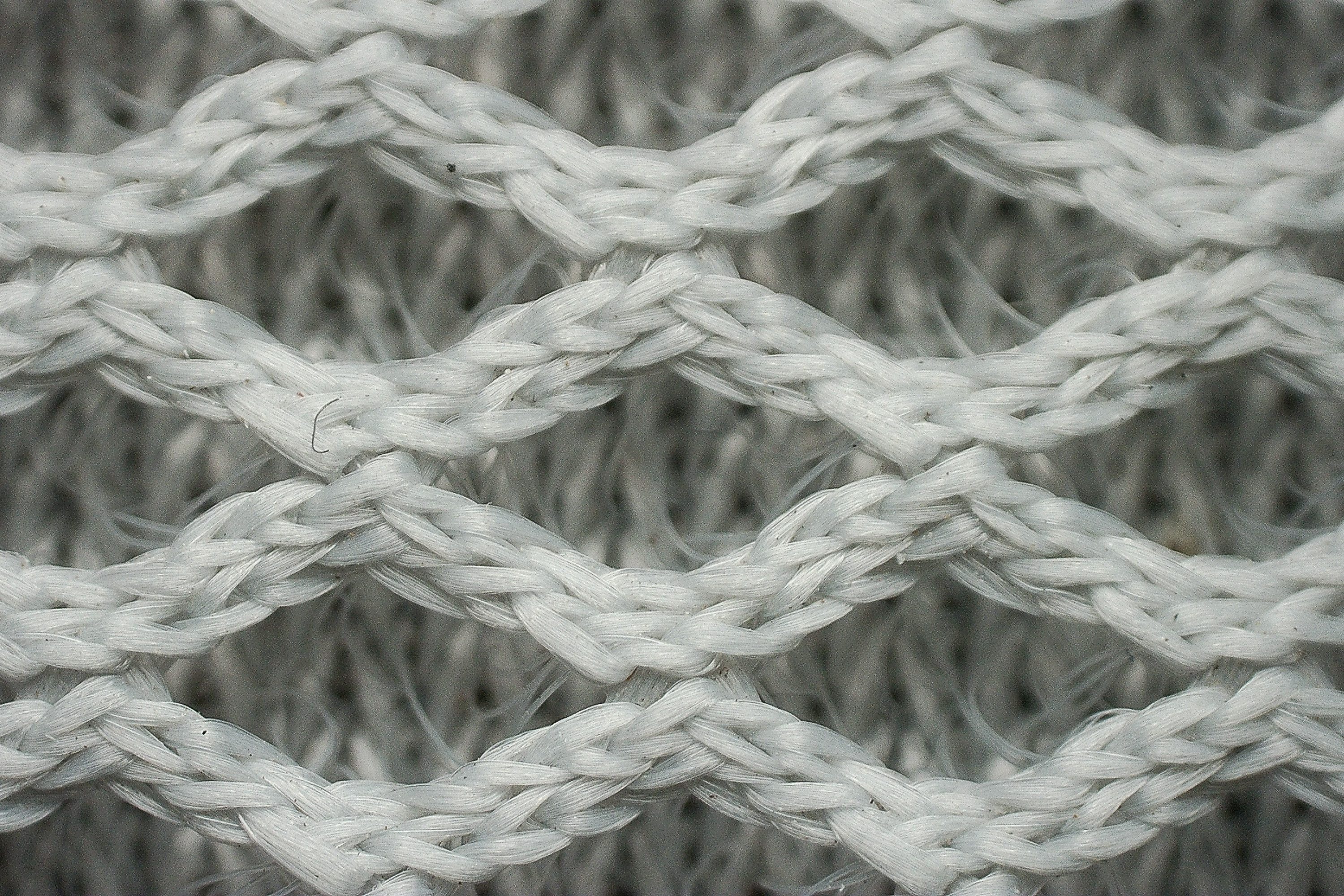
| 2010 | 1 |
| Average | 3 |
Stability
Lateral stability test
The running spirit of this New Balance shone happily on our lateral stability test. We moved our ankles from side to side, but we still felt well-planted. During our wear tests, we felt stable and comfortable even at the end of the day, when our feet and joints were more tired.
Torsional rigidity
Even though we're talking about a chunky and fairly tall shoe, our fingers didn't struggle that much when we twisted it. Its structure was flexible enough for us to give it an average 3/5, which means we didn't have to deal with a break-in period or any discomfort out of the box.
Even though this pair features a TPU shank at the midfoot, you can see in the video below that it bent alongside our fingers pretty nicely.
| 2010 | 3 |
| Average | 3.6 |
Heel counter stiffness
Our tendons and muscles at the rearfoot were pretty grateful when this shoe's heel counter scored a 3/5 on our stiffness test. It felt incredibly comfortable, but its plushness didn't reach the point where it'd affect the overall support negatively. New Balance hitting the bull's eye again!
| 2010 | 3 |
| Average | 3.2 |
Midsole width - forefoot
Even though this NB doesn't have the stiffest build out there, we were pretty happy with its stability. It has a very wide landing base that let our feet find their balance in every landing, and our caliper confirmed it when it returned a massive 115.9 mm in our lab.
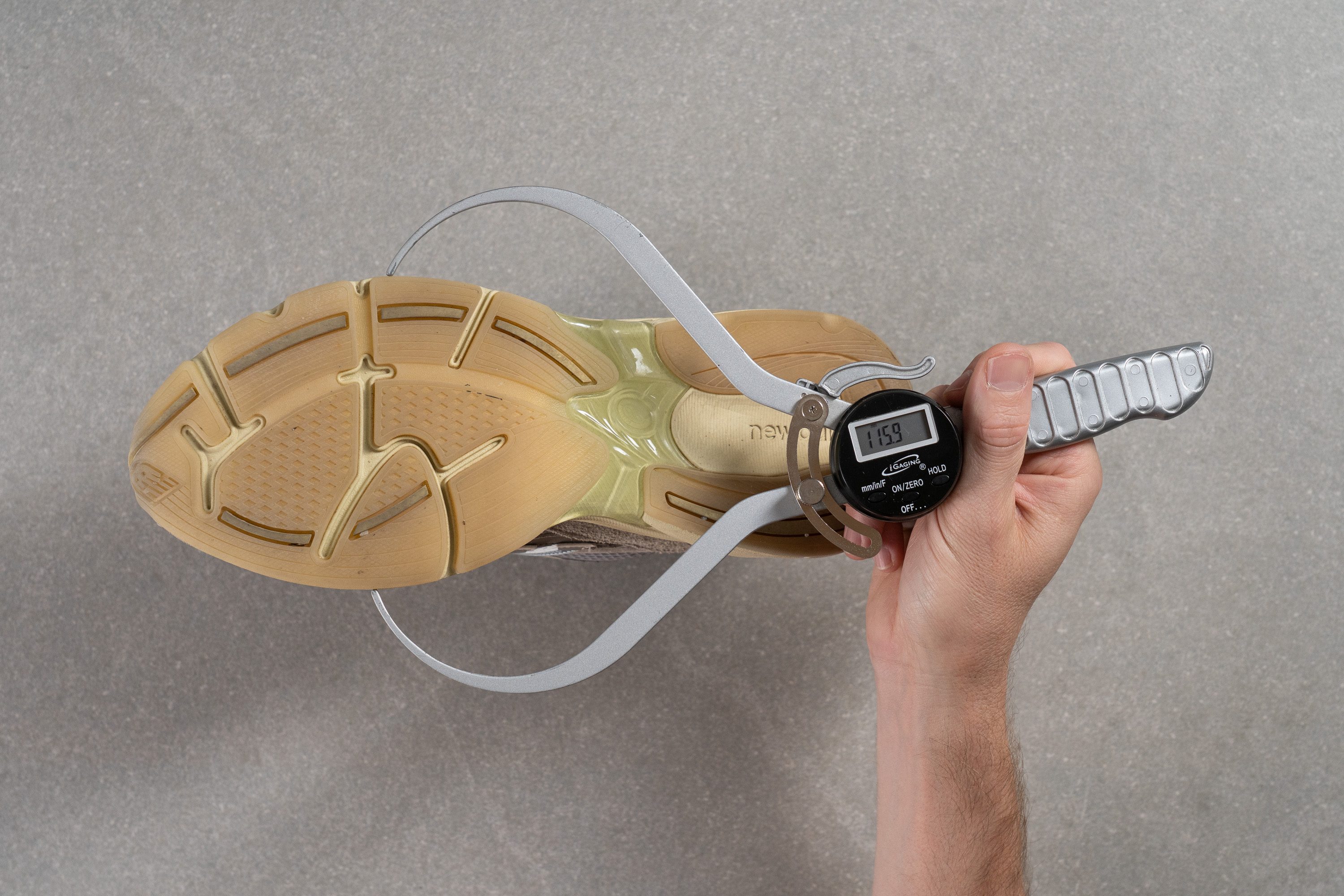
| 2010 | 115.9 mm |
| Average | 108.9 mm |
Midsole width - heel
The heel follows the same logic, but it takes it to a whole new level. With a flabbergasting score of 95.7 mm, the 2010's midsole width at the heel surpassed all our expectations! Even though this might be a little bit too much for some people, our standard-width feet felt comfortable. Also, if we wanted to go for a more supportive fit, we could always use the extra eyelet at the top to tighten things up.
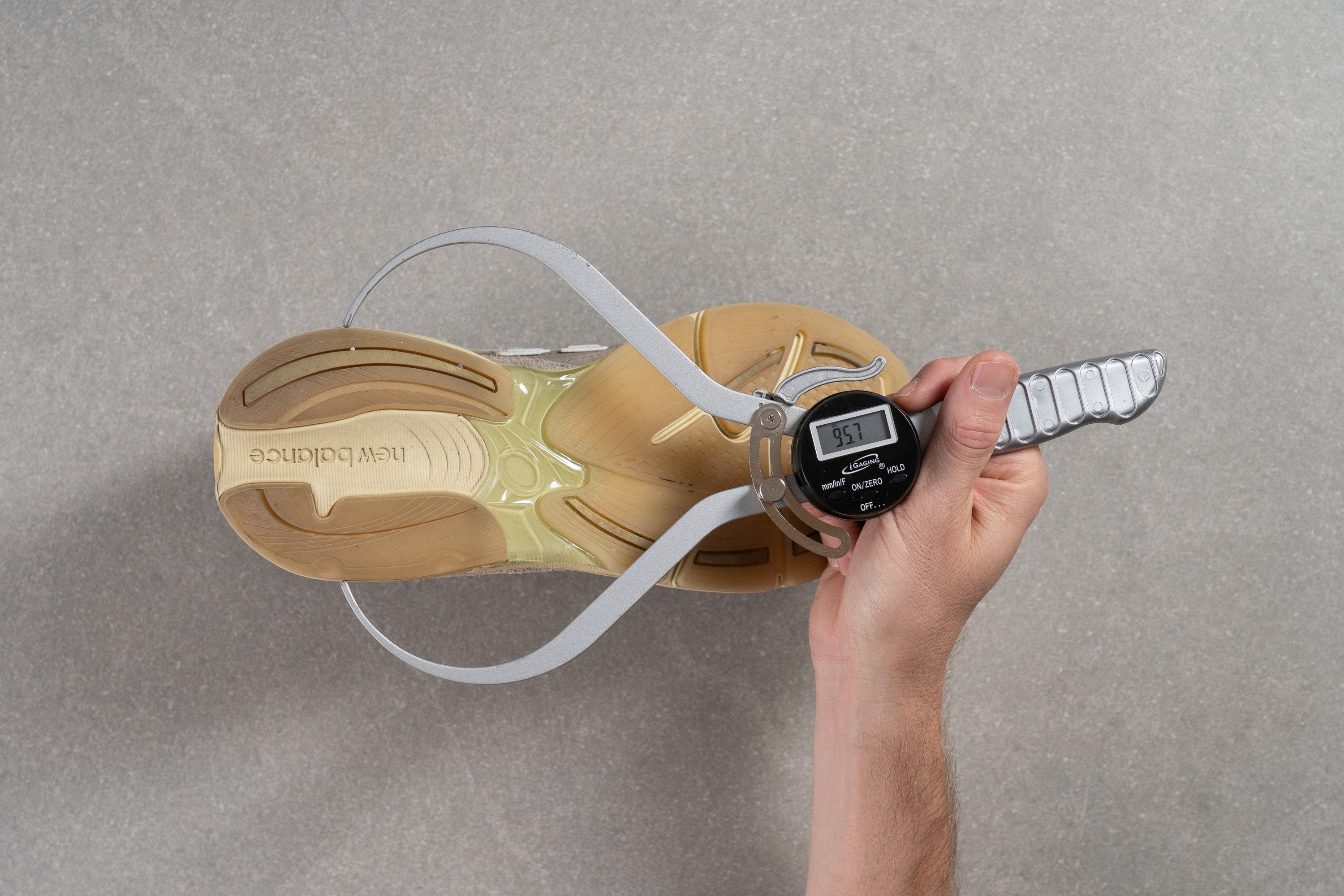
| 2010 | 95.7 mm |
| Average | 84.0 mm |
Durability
Leather/Suede quality
As expected from New Balance, the 2010 features high-quality materials. We started burning the suede that starts at the midfoot and goes all around the heel. As you can see, the material didn't burst into flames or end up all melted, which means it's authentic.
Then we moved the torch all the way to the front. We used the same method and, luckily, got the same results! The leather used in the area is also authentic, which is always great news.
| 2010 | Real suede |
Toebox durability
To be completely honest, we did expect a higher score on our durability test after the disaster we had to witness regarding the 2010's breathability. At 5K RPM and with 2N of force, the Dremel ended up drilling the mesh quite a bit, so we decided to give it an average 3/5. It's not a bad score but, as we were saying, we did expect something higher.
| 2010 | 3 |
| Average | 3.7 |
Heel padding durability
On the other hand, its heel padding durability was just right. This area is usually on the weaker side, so we were pretty happy when it scored an average 3/5 on our Dremel test.
| 2010 | 3 |
| Average | 3.2 |
Outsole durability
Even though we walked for hours and hours during our wear tests, this New Balance's outsole didn't really seem to care. And we couldn't believe our eyes when we took it to our lab and it ended up with only 0.4 mm of damage after our Dremel test. Its durability is just otherworldly, and even though we couldn't find any hints of this compound being the brand's famous NDURANCE rubber, it still showed elite durability.
| 2010 | 0.4 mm |
| Average | 1.1 mm |
Outsole thickness
In order to prolong its lifespan even more, New Balance opted for a 5.0 mm-thick outsole. So, apart from featuring a really durable material, there's also a lot of it to wear away before you need to kiss the 2010 goodbye.
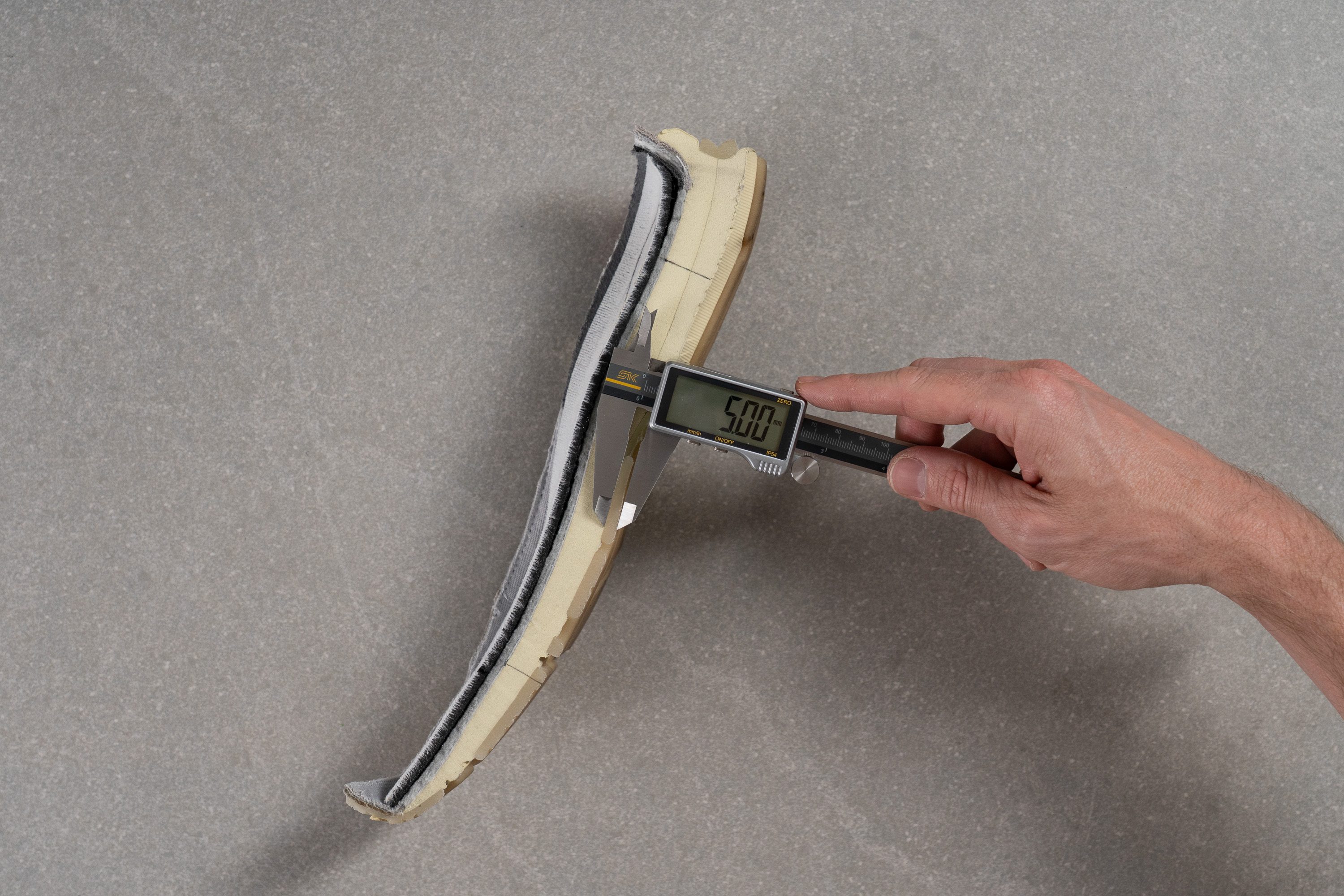
| 2010 | 5.0 mm |
| Average | 5.3 mm |
Misc
Insole thickness
We have two key things to say about this New Balance's insole. First, our caliper returned 3.6 mm when we measured it, which is lower than average, so it didn't add many extra points in comfort. Even though this might sound like bad news, we were actually pretty happy, as the inner space of the 2010 isn't crazy, so a thinner midsole makes total sense. And second, it has loads of ventilation holes. Yet... this didn't really do much regarding its overall breathability.
| 2010 | 3.6 mm |
| Average | 5.1 mm |
Removable insole
You can change this shoe's insole if you need or want to. Nevertheless, if we were you... we wouldn't. Opting for a thicker piece might just make the whole fit more uncomfortable due to the lack of space, and we wouldn't risk losing the tiniest of ventilation that its holes might give us!
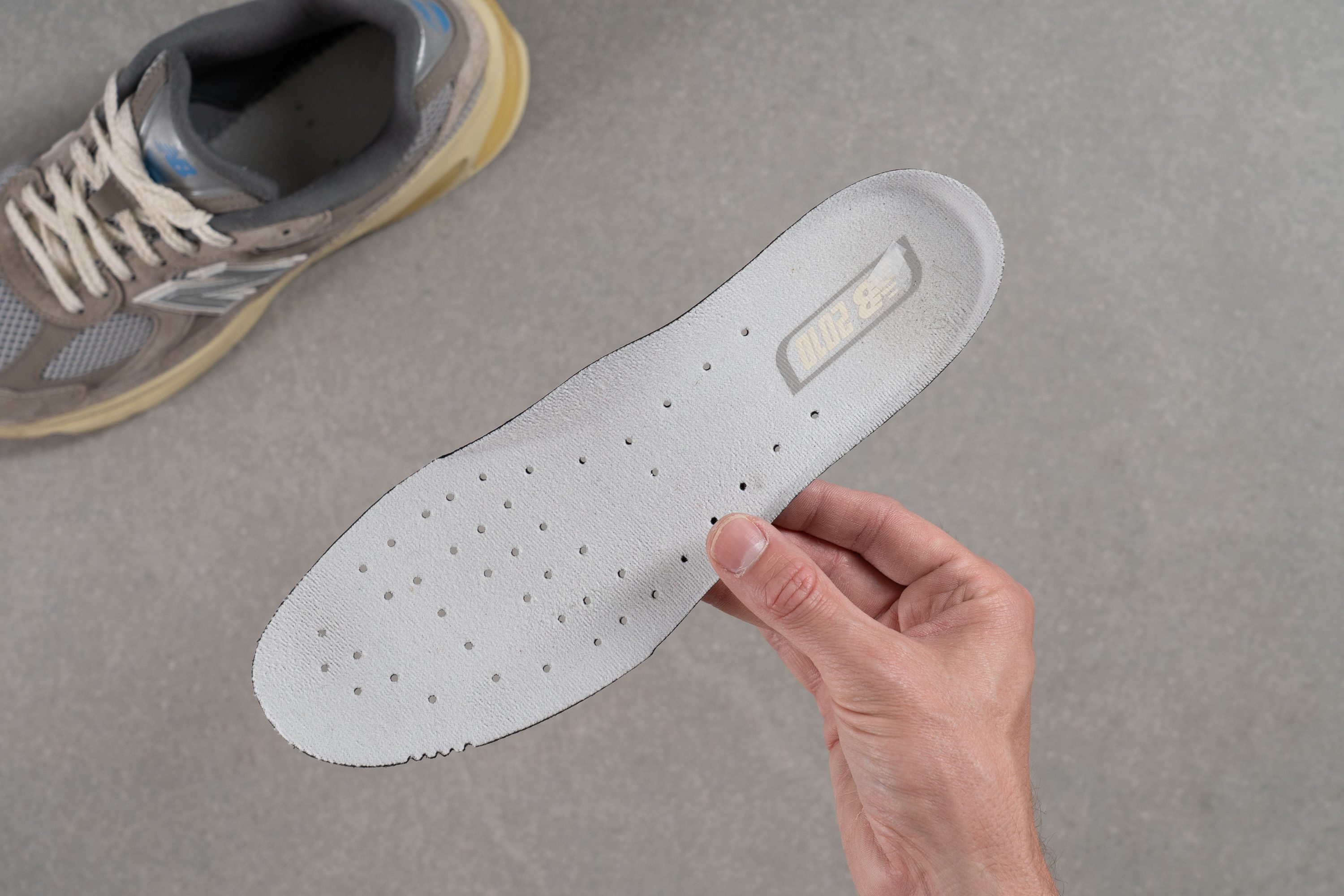
| 2010 | Yes |
Reflective elements
Time to shine! The New Balance 2010 has reflective elements all over its upper.
| 2010 | Yes |
Tongue padding
In general, these sneakers are fairly cushioned in all the right areas, prioritizing your feet's comfort.
With a massive tongue padding of 10.9 mm, the NB 2010 offers wonderful instep comfort. This prevented us from any lace bite, even if we decided to tighten the laces and secure the heel properly.
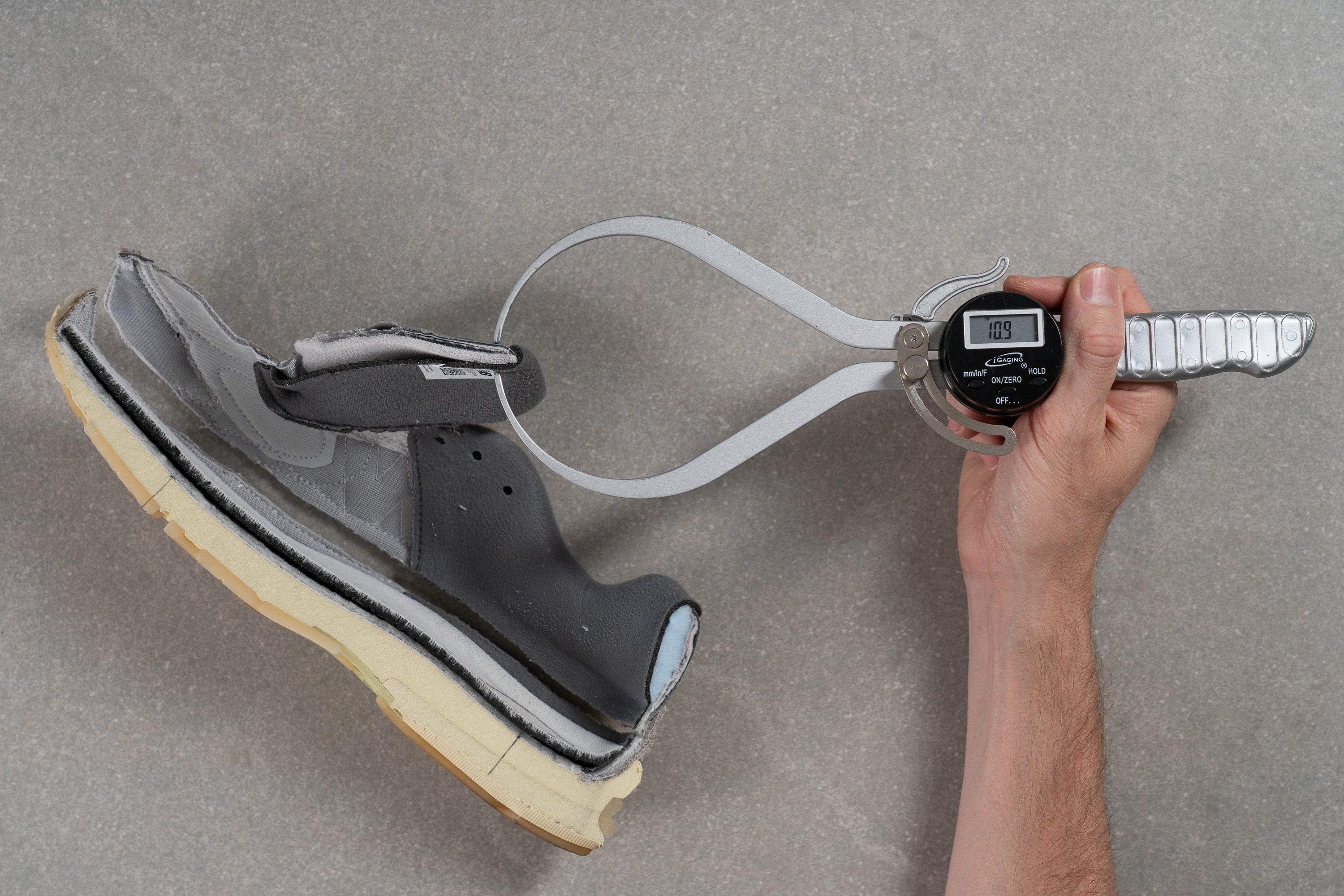
| 2010 | 10.9 mm |
| Average | 9.6 mm |
Price
After thoroughly analyzing these sneakers, we honestly believe they are a bang for the buck. Its incredibly durable outsole will let you walk for hours, days, months... and whatnot. Even if you want to do it at night, its high-quality materials feature reflective accents that will keep you safe. Overall, we do think this super comfy pair of New Balance comes with loads of advantages for its price.
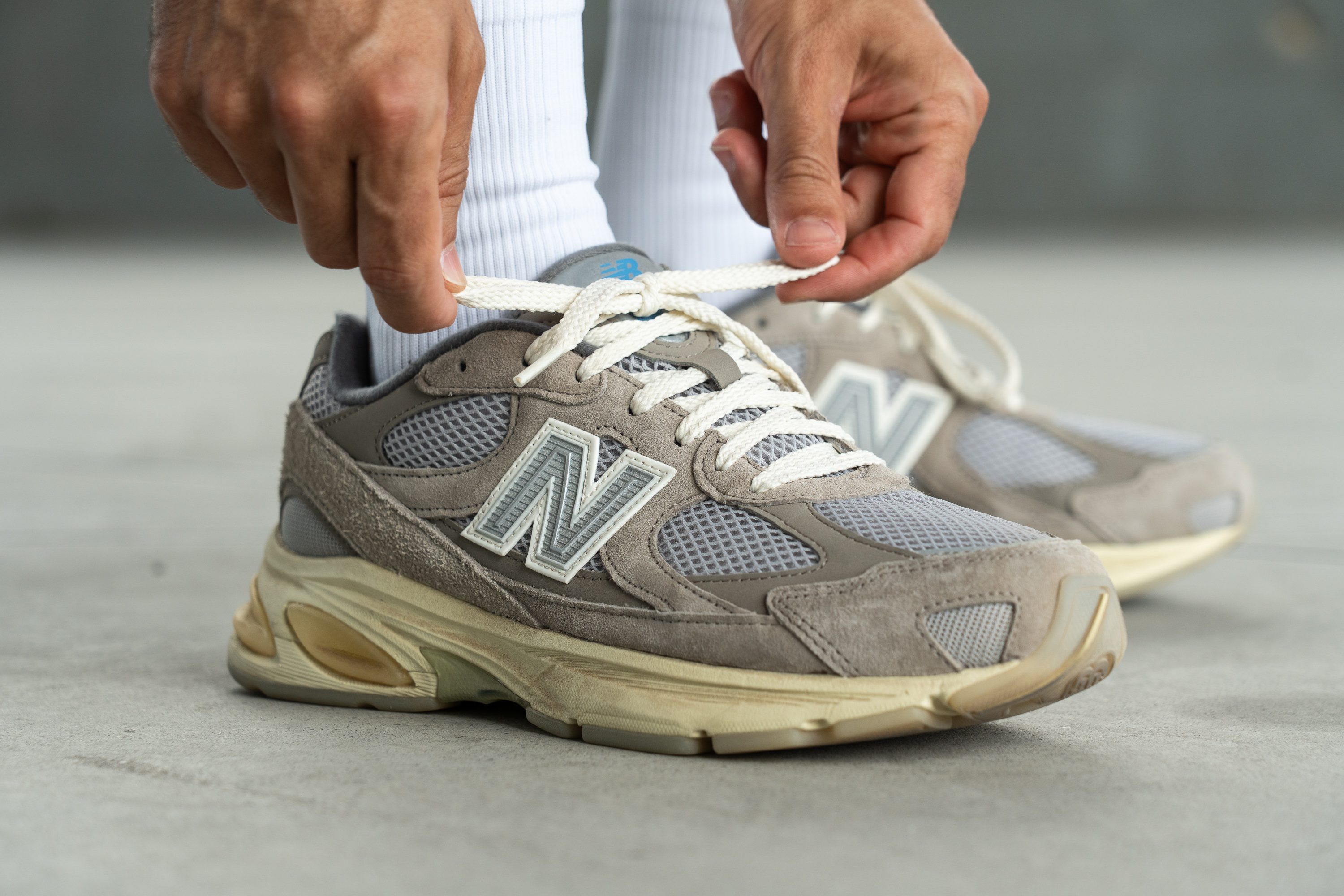
| 2010 | $160 |
| Average | $123 |
Heel tab
Who would complain if instead of a heel tab there's a pretty reflective accent? Because we definitely wouldn't!
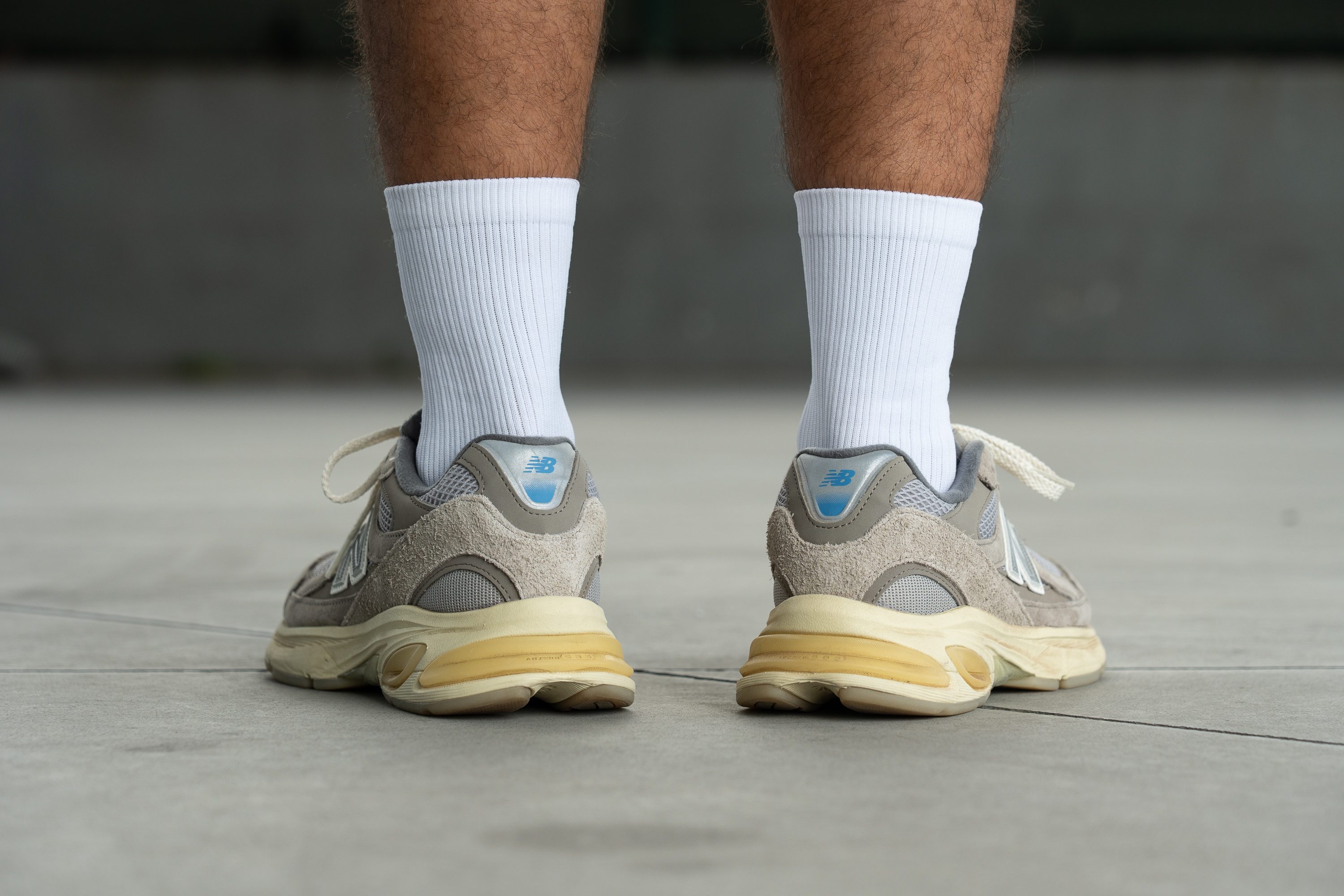
| 2010 | None |

